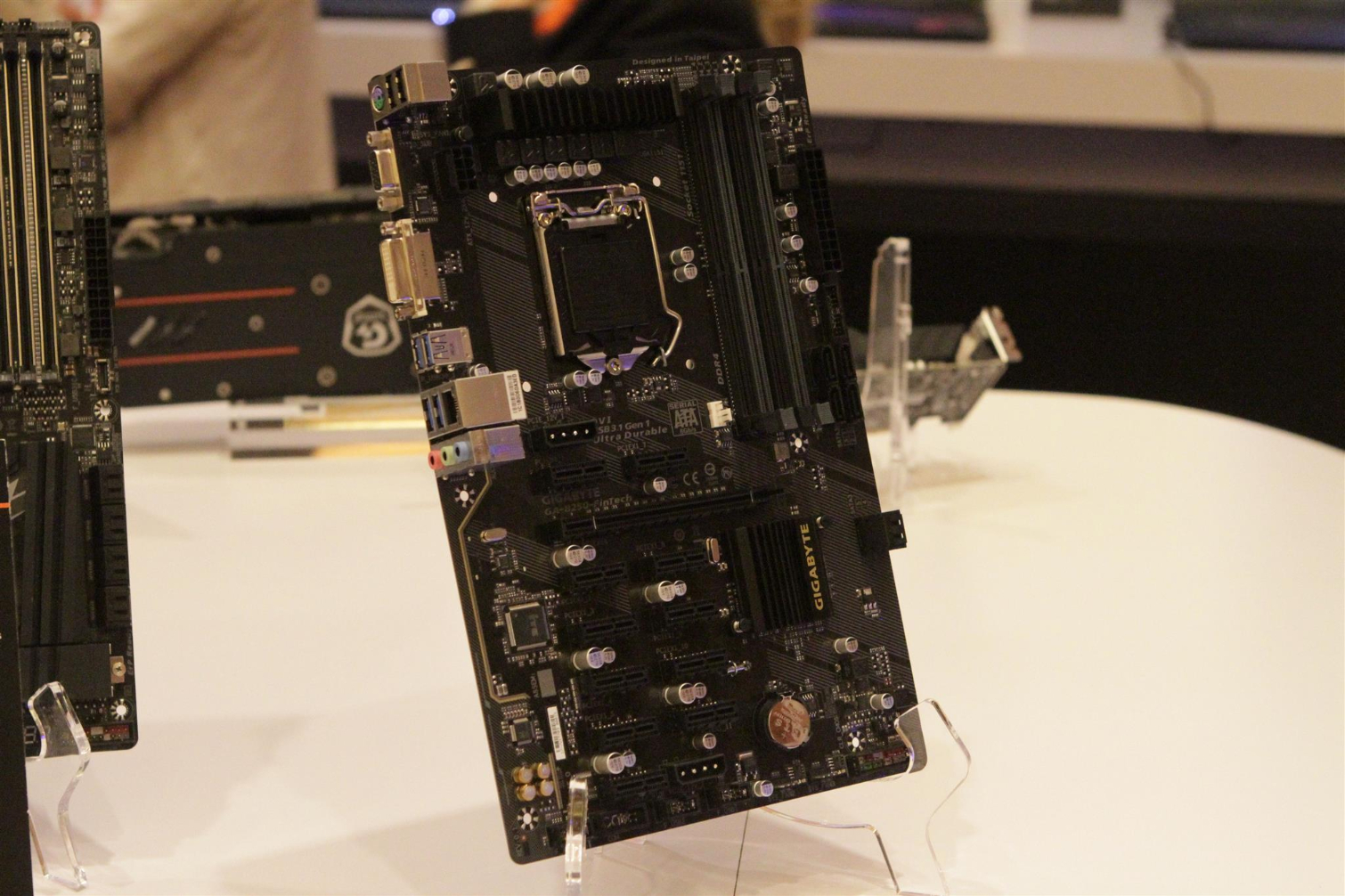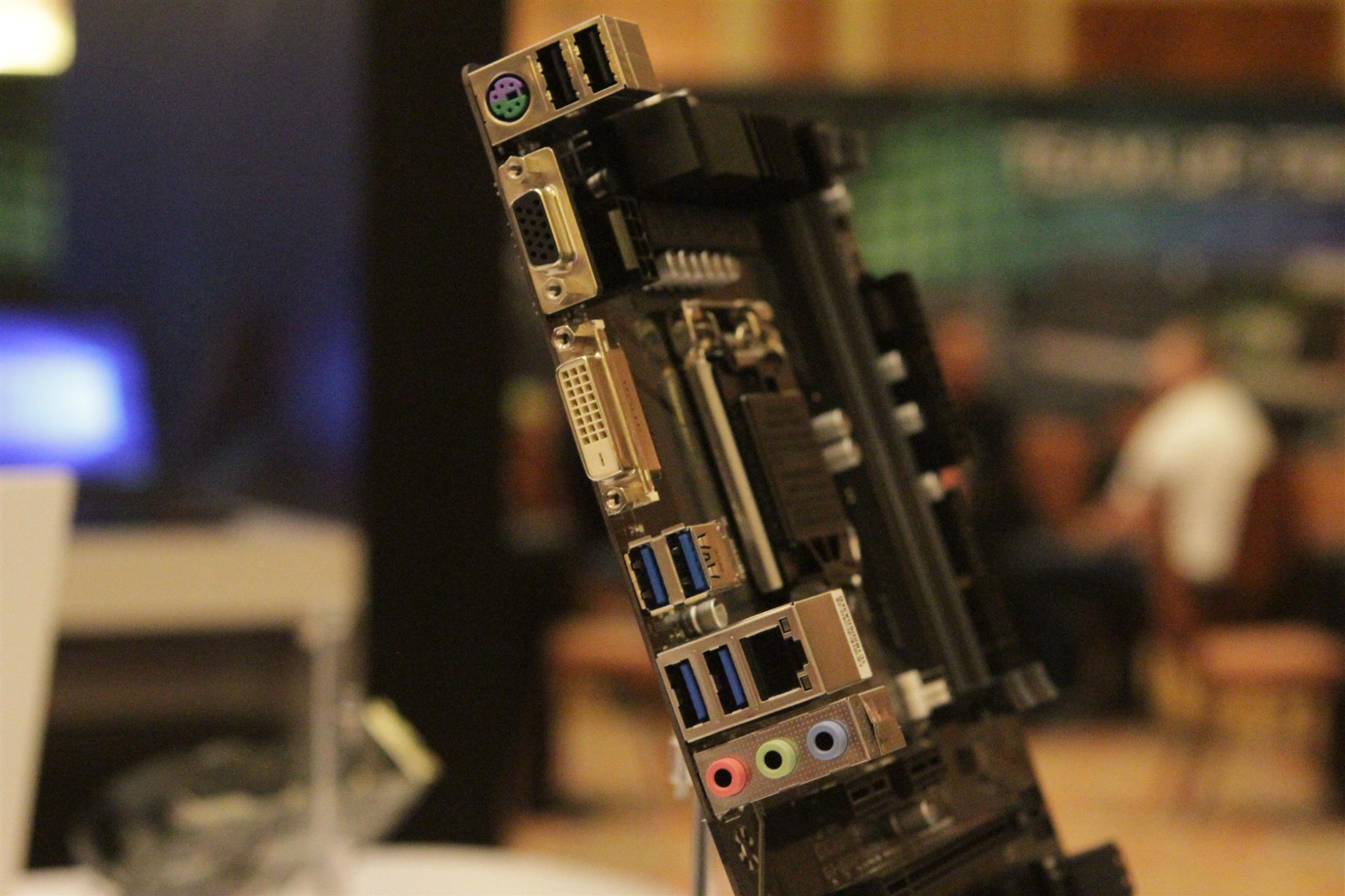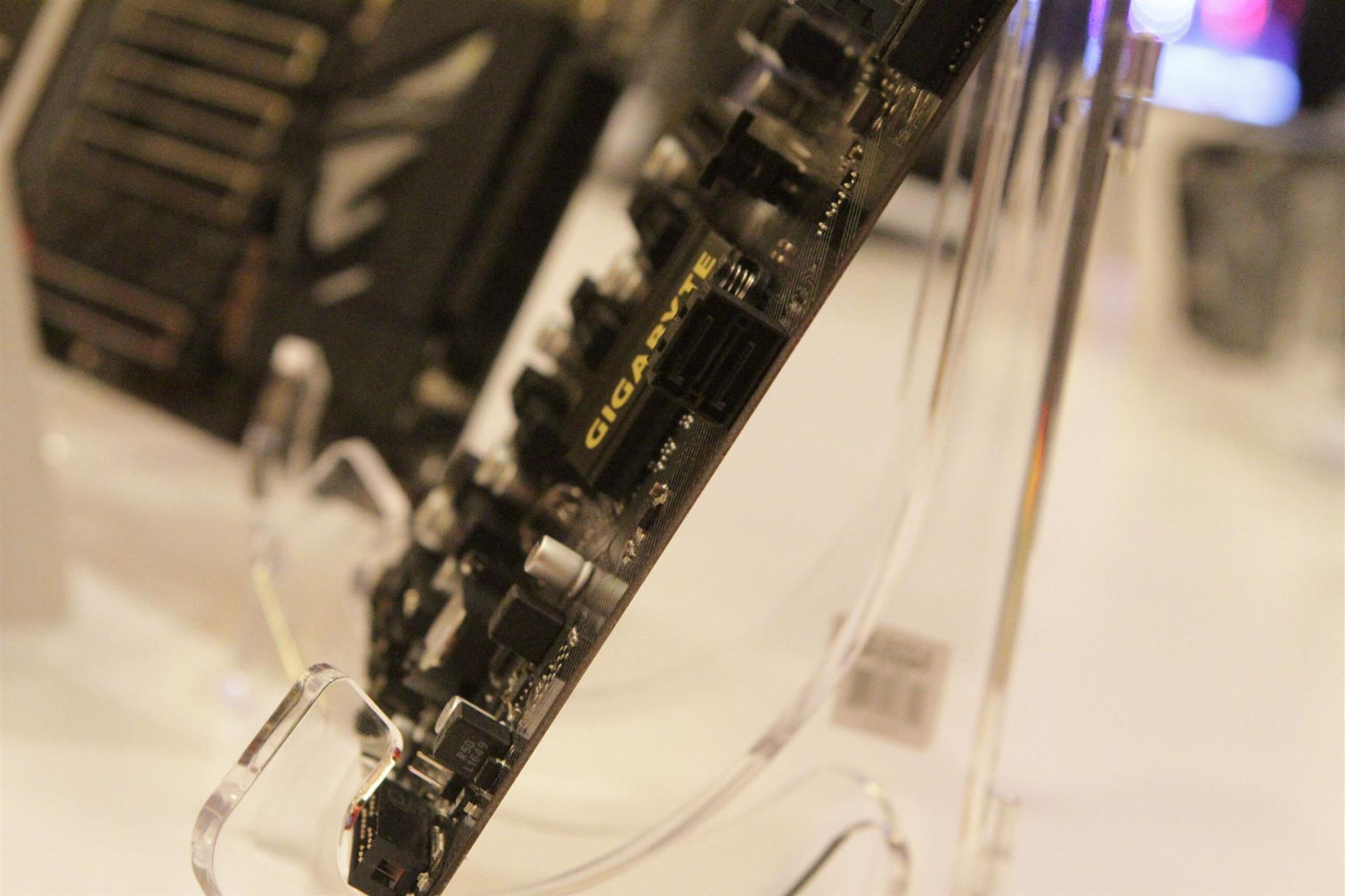Gigabyte Announces Mining-Dedicated B250-FinTech Motherboard






Companies often bring products they aren't quite ready to announce to trade shows, and at CES 2018, Gigabyte was no exception. We spotted a new motherboard at the company's booth, and the company originally stayed mum on what exactly it had brought to the convention. Now the company has broken that silence by officially announcing a board made specifically for cryptocurrency miners, the B250-FinTech.
Motherboard vendors have never shied from the mining craze. The most recent Ethereum-fueled mining wave saw the release of dedicated mining motherboards from Asus and Biostar, but there are older ones existing from the early Bitcoin days. Gigabyte is joining that trend with the B250-FinTech, which is equipped with a total of 12 PCI-e slots, bolstered PCI-e power circuitry, and other mining conveniences.
Starting with the chipset, the B250 platform is Intel’s cheapest in the 200-series. It supports 7th-gen (Kaby Lake) and 6th-gen (Skylake) LGA 1151 CPUs and dual channel DDR4, for which the B250-FinTech has four slots. The board’s form factor is reduced-width ATX, which typically only has seven expansion slots, but Gigabyte has laid out 11 PCI-e x1 slots along with one full-length PCI-e slot in a grid on the bottom half of the board. Connecting GPUs to the slots requires the use of flexible PCI-e extender cables. This is fine for mining rigs, which are typically custom made and don’t have GPUs plugged directly into motherboard slots. Power delivery on the PCI-e slots is bolstered by two four-pin, 12V Molex connectors.
To make things more convenient for miners, Gigabyte packages the B250-FinTech with several useful accessories. The first is a 24-pin ATX PSU splitter cable that allows the motherboard to simultaneously boot up to three PSUs. That’s necessary because powering 12 GPUs is likely going to require more PSUs than the single one attached to the motherboard. The second useful addition is a small daughterboard that provides an on-board power and reset switch for the board. Similar to Asus’ mining board, the Gigabyte also has a “mining mode” setting in its BIOS that sets the default GPU for video output to the CPU’s integrated one and sets the protocol for the PCI-e slots to 1.0.
For a dedicated mining board, the B250-Fintech isn’t as stripped as one might expect, though. Along with six SATA headers, it sports six on-board temperature sensors and four PWM-capable fan headers. The board also has an audio configuration that would typically only be seen on consumer motherboards. Dedicated audio capacitors and electrically isolated audio traces seem like a wasted cost considering the futility of listening to anything in a room with 12 GPUs running on maximum utilization.
Gigabyte hasn’t announced pricing or availability for the B250-FinTech yet.
| Gigabyte | B250-FinTech |
|---|---|
| Form Factor | ATX (30.5 x 20.0cm) |
| Socket | Intel Socket 1151 |
| Chipset | Intel B250 |
| Memory | DDR4 @ 2,400MHz |
| Memory Slots | 4 |
| Max Memory | 64GB |
| PCIe | 1 x16 (electrically x16)11 x1 |
| SATA III | 6 x SATA 6Gbps |
| LAN | Realtek Gbe |
| I/O | 1 x PS/2 keyboard/mouse port1 x D-Sub port1 x DVI-D port4 x USB 3.1 Gen 1 ports2 x USB 2.0/1.1 ports1 x RJ-45 port3 x audio jacks |
Get Tom's Hardware's best news and in-depth reviews, straight to your inbox.
-
bgunner I am not in to the mining seen but it would be interesting to see if this board actually helps with mining or not. Can a motherboard be made to improve mining or is it just a waste? With this i am not referring to the ability to have 12 GPU's on one board but can the Mining BIOS version help over the standard versions with lets say just 2 GPU's instead of 12. This would level the playing field to all motherboards and not just a mining board.Reply -
ammaross Reply20685386 said:I am not in to the mining seen but it would be interesting to see if this board actually helps with mining or not. Can a motherboard be made to improve mining or is it just a waste? With this i am not referring to the ability to have 12 GPU's on one board but can the Mining BIOS version help over the standard versions with lets say just 2 GPU's instead of 12. This would level the playing field to all motherboards and not just a mining board.
No, the motherboard has nearly zero effect on mining. What little it does have is merely stability with having 12+ GPUs (such as 4G mode and that "mining mode" they mentioned in the article). Actual hashrates are card and power-delivery dependent.